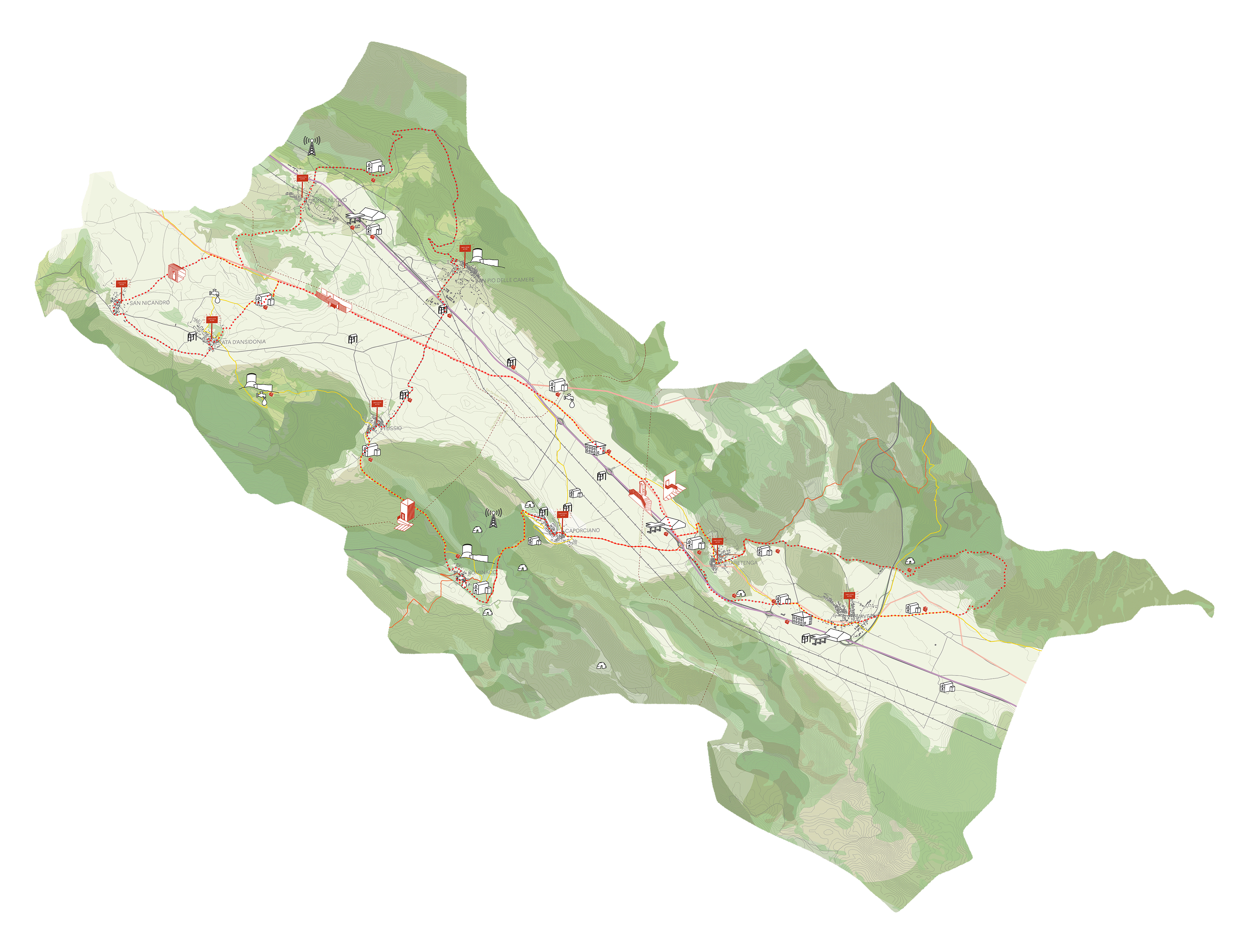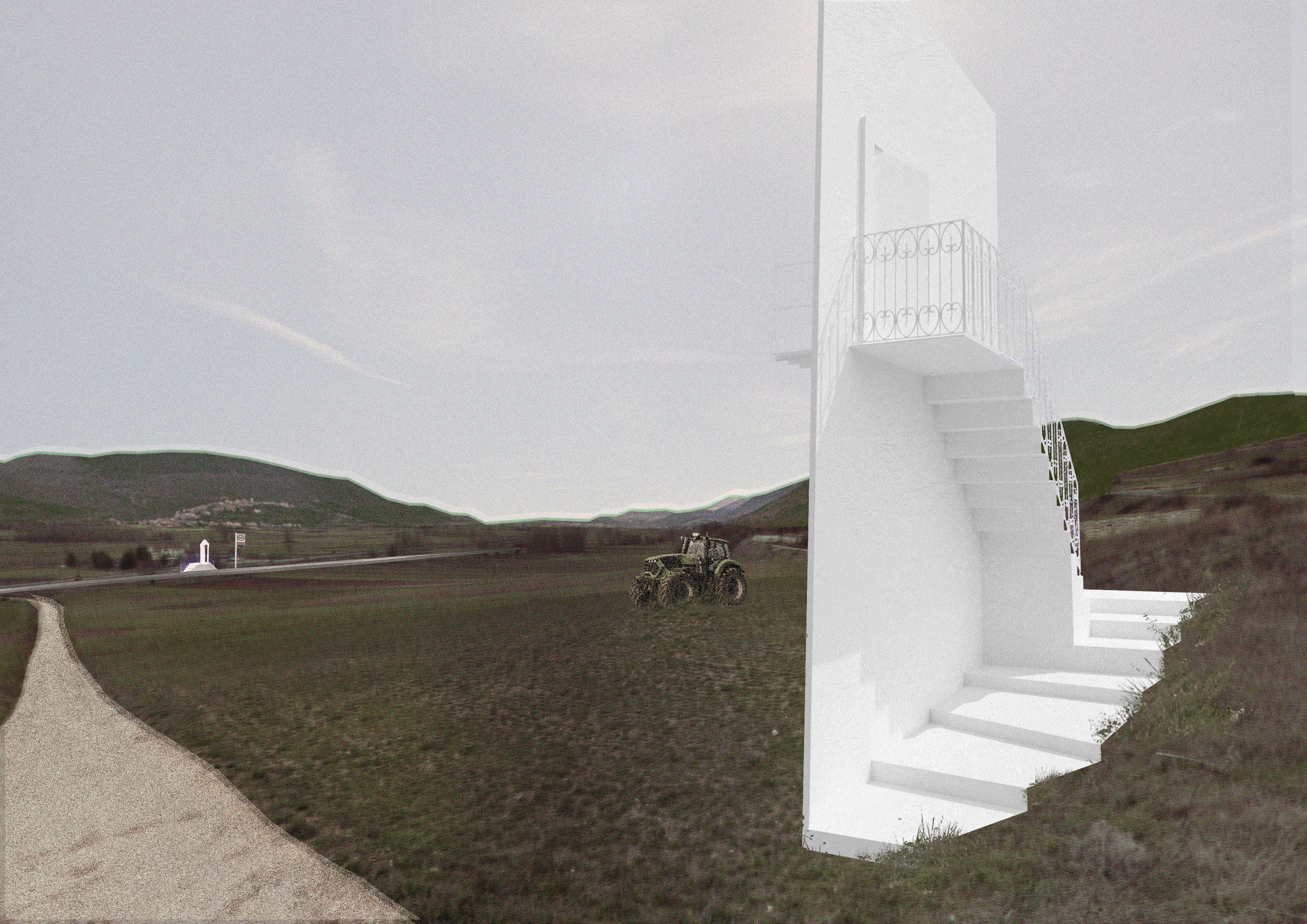






Rural Networks:
Retelling the Alto Piano di Navelli
September 2023 - July 2024
Max Bilger,Cosima Seiberth,Leonie Hartung
- Narratives
Forgotten bonds and connections should be made visible and strengthened through adding a reactivating layer, offering a new interpretation of the existing.
The earthquake of 2009 in L’Aquila – amongst other factors – led to a severe loss of inhabitants within the area which is now characterized by impermanence, loss and destruction. This leads to a feeling of losing control, missing self-determination and autonomy. Within the decreasing population we also noticed a lacking sense of belonging and community. At the same time, we recognized the notion of permanence within the dense fabric of historical layers. A common heritage makes up a rich basis to work with and to re-attribute value to it. By starting with the already existing, we want to question the current narrative.












- Analysis
Reminiscents of the past are roman roads, ancient shepherd tracks (tratturi) and pilgrim paths that come with their secondary infrastruc- tures like tholos, chapels and wells.
Contemporary routes primarily include the Superstrada SS17, that comes with casi cantonieri, gas stations and bus stops. The accompanying architectures mark the routes and hold different functions: protection, supply, communication and contemplation.
Permanent inhabitants, nomads, temporary and longstay tourists all move and act within the defined region. We want to connect those peop- le and villages with each other, but also connect it stronger with the landscape.

- Intervention
Besides the marked route itself with its different historical subsections, there are three layers of potential stops:
1st
The permanent inhabitants of the villages will be connected through a characteristic new path, which holds the potential to foster a new common identity. Volunteer local actors can contribute a station along the way within the village and become part of the network.
2nd
Existing infrastructures and cultural herita- ge as important spatial manifestation of identity alongside the hiking path should be highlight- ed and activated. They will get a small ‚sign’, a seating possibility that hikers will recognize immediately.
3rd
The architectonic interventions work as additional stations alongside the new path, fol- lowing the same principles as in the old routes: protection, supply, communication and con- templation. The interventions work as pieces of memory, by putting the built identity, which is in the process of slowly decaying, up for di- scussion.
The permanent inhabitants of the villages will be connected through a characteristic new path, which holds the potential to foster a new common identity. Volunteer local actors can contribute a station along the way within the village and become part of the network.
2nd
Existing infrastructures and cultural herita- ge as important spatial manifestation of identity alongside the hiking path should be highlight- ed and activated. They will get a small ‚sign’, a seating possibility that hikers will recognize immediately.
3rd
The architectonic interventions work as additional stations alongside the new path, fol- lowing the same principles as in the old routes: protection, supply, communication and con- templation. The interventions work as pieces of memory, by putting the built identity, which is in the process of slowly decaying, up for di- scussion.




︎︎︎︎